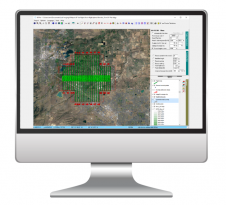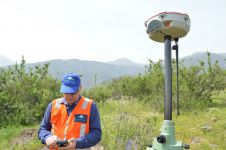Bluesky 3D Laser Maps Help Protect Coastal Heritage Sites
这篇文章最初发表在Geomatics World.
The Royal Commission on the Ancient and Historical Monuments of Wales (RCAHMW) has commissioned aerial mapping company Bluesky to capture highly accurate laser maps of six coastal locations in the Irish Sea. The new five-year CHERISH project, funded through the European Union’s Ireland-Wales programme, will analyse coastal and island archaeology and maritime heritage sites most affected by climate change, coastal erosion, storms and rising sea levels. The early acquisition of the Bluesky LiDAR data for CHERISH will provide the first 3D data for many of the Welsh islands under study.
CHERISH scientists will use the Bluesky data to produce new archaeological mapping and management maps for the tourist and heritage sites, which include the renowned nature reserves of Bardsey and Ramsey Islands, highlighting climate change threats for owners and managers. The Bluesky LiDAR data will also be used to produce stunning 3D visualisation and animations and the results will, in due course, be made available via the CHERISH project website.
“The Bluesky LiDAR data represents a vast new resource of high resolution landscape data, giving us new spatial information on the built heritage, archaeology, geology and landscape of these remote locations,” commented Dr Toby Driver, Senior Investigator at The Royal Commission. “The Bluesky data will also complement the use of other innovative visualisation and geomatic data solutions by the joint nation CHERISH Survey Team, including 3D photogrammetry derived from aerial photography and drone surveys, and ground based laser scanning and archaeological survey using differential GPS.”
The key objective of the CHERISH project is to increase knowledge and understanding of the impacts (past, present and near future) of climate change, increased storminess and extreme weather events on the cultural heritage of reefs, islands and headlands of the Welsh and Irish regional seas. The project will target data and management knowledge gaps, employing innovative techniques, such as the Bluesky LiDAR, to discover, assess, map and monitor heritage assets, disseminating the results and developing best practice for future climate change adaption.
“This is an exciting new project, bringing a strong partnership of archaeologists, geoscientists and maritime specialists to bear on the significant challenges posted by climate change,” added Christopher Catling, Secretary (CEO) of RCAHMW.
The Royal Commission is the lead partner for CHERISH (Climate, Heritage and Environments of Reefs, Islands and Headlands) and will work alongside Aberystwyth University, The Discovery Programme: Centre for Archaeology and Innovation Ireland and the Geological Survey of Ireland. CHERISH is EU Funded through the Ireland Wales Co-operation Programme 2014-2020.
Make your inbox more interesting.Add some geo.
Keep abreast of news, developments and technological advancement in the geomatics industry.
Sign up for free












